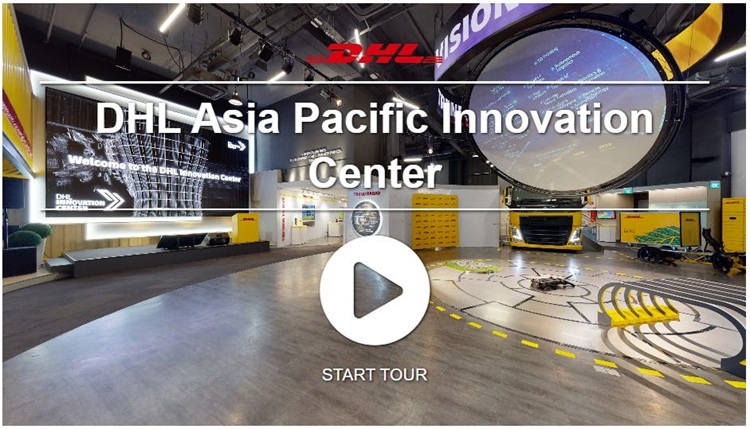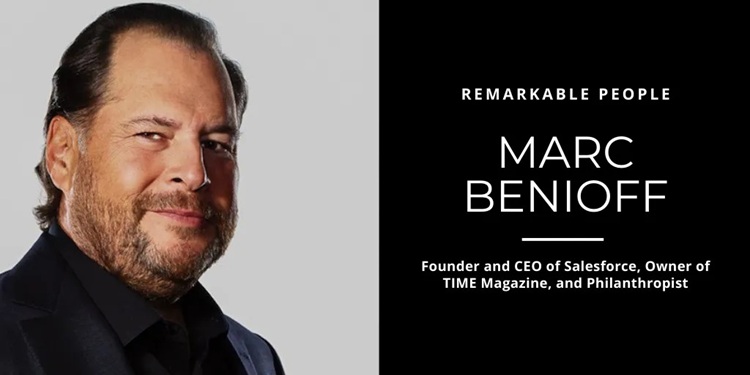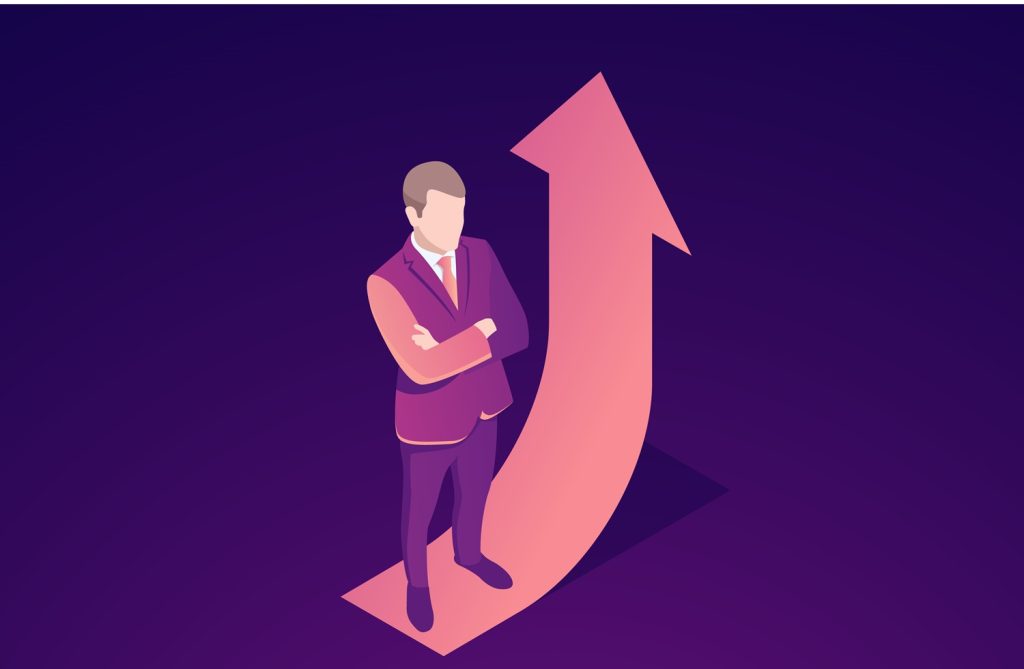In today’s hyper-competitive B2B landscape, client-centricity isn’t just a buzzword—it’s a growth engine. But embedding it into the fabric of your organization takes more than good intentions. It requires bold strategies, real-world experimentation, and a willingness to embrace both the upsides and the trade-offs. Here are five distinctive approaches that leading companies use to put clients at the center which foster client-centric culture —along with the lessons they’ve learned along the way.
1. Co-Create the Client Journey—Don’t Just Map It
Forget static journey maps built in boardrooms. The real magic happens when clients help design the experience themselves. DHL’s Innovation Centers are a masterclass in this approach. By inviting clients into co-creation workshops, DHL has developed cutting-edge logistics solutions—from parcelcopter drones to AR-powered warehouses. These sessions aren’t just about feedback—they’re about partnership, trust, and shared innovation.
Co-creation builds loyalty and unlocks solutions you’d never find alone. Clients feel heard, valued, and invested. But it’s not without its challenges. Co-creation demands time, facilitation skill, and a tolerance for ambiguity. Not every client is ready—or equipped—to ideate at this level, and not every idea will be viable. Still, when done right, the payoff is transformative.

2. Train Every Team in Client Empathy
Client-centricity isn’t the job of sales alone. When finance, ops, and engineering understand client pain points, the entire organization becomes more responsive. Salesforce’s “Customer360” enablement program immerses cross-functional teams in real client stories. Through empathy labs and role-play exercises, even backend teams learn to “walk in the client’s shoes.” The result? Products and processes that reflect real-world needs—not internal assumptions.
The benefit is clear: empathy drives relevance. Teams become more agile, more aligned, and more attuned to what clients actually care about. But the downside is that empathy training can feel abstract or performative if not tied to real decisions. Without leadership reinforcement and follow-through, it risks becoming a one-off workshop rather than a cultural shift. The key is to embed empathy into daily rituals—not just annual events.
3. Measure What Matters to Clients
Vanity metrics like clicks and impressions don’t drive growth. Client-centric companies track what truly matters—like how fast clients see value or how well their goals are met. HubSpot, for example, ditched superficial KPIs in favor of metrics like “Time to First Value” and “Customer Success Score.” These helped pinpoint onboarding friction and improve retention—leading to stronger client relationships and higher lifetime value.
With right metrics, you get clarity on what drives real impact. These metrics align internal teams around client outcomes, not internal outputs. But the challenge lies in data complexity and cultural inertia. Shifting from traditional KPIs to client-centric ones requires retooling dashboards, retraining teams, and sometimes confronting uncomfortable truths. It’s worth it—but it’s not plug-and-play.
4. Embed Living Client Personas in Every Decision
Static personas belong in dusty decks. The best companies use dynamic, data-driven personas that evolve with client behavior—and influence every strategic move. IBM’s Automatic Persona Generation (APG) system creates real-time personas based on client data. These aren’t just marketing tools—they’re embedded into product development, pricing, and campaign design. It’s empathy at scale, powered by analytics.
Living personas help teams anticipate needs, personalize experiences, and make faster, smarter decisions. But there’s a trade-off: data dependency. If your inputs are flawed or biased, your personas will be too. And over-reliance on algorithms can dilute the human nuance that clients value. The best approach blends data with dialogue—quantitative insight with qualitative empathy.
5. Turn Clients into Innovation Partners
The most client-centric companies don’t just serve clients—they innovate with them. Amazon’s Lab126 invites select clients and partners to co-develop products like Kindle and Echo. Early feedback shapes design and functionality, making clients feel like collaborators—not just consumers. This model deepens trust and accelerates market fit.
With this strategy, you reduce guesswork and build solutions clients actually want. Innovation becomes faster, more targeted, and more inclusive. But the risk is scope creep and misalignment. Not every client idea fits your strategy, and not every partnership scales. Managing expectations—and protecting core vision—is essential. Still, when clients become co-innovators, the relationship transcends transaction.
Client-centricity isn’t a department—it’s a mindset!
These five strategies show how leading B2B firms embed it across every touchpoint, metric, and decision. Each approach comes with its own rewards and realities. But together, they form a blueprint for growth that’s grounded in empathy, powered by data, and shaped by collaboration.
Whether you’re in Manufacturing & Industrial, IT, SaaS, Tech, ITES, logistics, or consulting, the path to relevance starts with one question:
“What would our clients build—if they were in our shoes?”
Do you need professional help in this area? Contact us
#nilakantasrinivasan-j #canopus-business-management-group #B2B-client-centric-growth #client-centric-culture #DHL
Who should be the first salesperson of your company and why?
I want to start by describing the profile of the CEO of a B2B company. He’s a technical genius and holds a couple of patents. He possesses deep-tech expertise. His growth philosophy is based on technical excellence and operational efficiency. Unfortunately, ever since he took over, the company hasn’t seen a big break. They have been lurking below their competitors in spite of superior technology. He grills his BD team day in and day out.
But the real problem is something else. It’s his mindset. He doesn’t believe that he is the “First Salesperson of his Company”. In fact, he doesn’t believe he is accountable for sales. He hardly engages with clients or prospects. Instead, he prefers to delegate client interactions to his BD team. Of course, he reviews them a lot, but he never picks up the phone and talks to a client. Neither does he voluntarily schedule visits to clients. His philosophy is that if there is a problem with clients, bring it to me. Yes, he digs deep and spends hours on technical reviews when a client complains. In fact, he tells his clients, “I’m available 24×7. Call me any time!” Clients do call him to escalate, and they fire him, and he’s always on the receiving end. Going by the Pavlovian principle of classic conditioning, every time the client calls, he’s stressed and passes it all down the line.
We consider the head of any country to be the first among equals, the first citizen. The CEO of any organization is the First Salesperson of that Company. This is even more pertinent for B2B, as sales and marketing are largely a matter of human-to-human connection.
First Salesperson of that Company – Exemplars
On the contrary, let’s consider the leadership style of Marc Benioff, co-founder of Salesforce. He is known for his hands-on approach to sales and marketing and for actively engaging with customers. In one instance, when a major potential client expressed doubts about the security and reliability of Salesforce’s cloud platform, Benioff didn’t just rely on his sales team to address the concerns. Instead, he personally met with the client’s executives, listened to their concerns, and provided detailed explanations about the robustness of Salesforce’s infrastructure and the benefits of moving to a cloud-based CRM system.

Image credit : Guykawasaki.com
Marc Benioff’s hands-on approach to sales, his persistence in overcoming challenges, and his growth mindset pushed the boundaries of not only his company but the tech industry as a whole. Under Benioff’s leadership, Salesforce introduced the concept of subscription-based pricing for enterprise software, which departed from the traditional perpetual license model. This approach made enterprise-level CRM accessible to companies of all sizes, democratizing access to powerful business tools.
Benioff is not an exception. Larry Ellison, co-founder and former CEO of Oracle Corporation, was renowned for his aggressive sales tactics and direct involvement in major sales negotiations. In Oracle’s early years, Ellison took on the role of chief salesman, leveraging his industry connections and technical expertise to win over large corporate clients for Oracle’s database solutions.
Benioff and Larry are exemplary examples of the first salespersons of their company.
Without the First Salesperson, a company suffers the following consequences:.
- Brand Perception: A lack of sales focus can harm the company’s reputation and brand perception, making it harder to attract and retain customers.
- Weak Relationships: Strong customer relationships are crucial in B2B sales. If the CEO is not involved in or supportive of sales efforts, the company may fail to build and maintain strong customer relationships.
- Low Motivation: Sales teams often look to the CEO for inspiration and leadership. If the CEO doesn’t prioritize sales, it can lead to low morale and motivation among sales personnel.
- Competitive Disadvantage: Competitors with strong sales leadership will likely outperform a company with weak sales accountability, resulting in a loss of market share.
Ideal First Salesperson of a Company – What will he do?
Here are some things that the First Salesperson of a Company will do:
- Take ownership and accountability for sales and marketing rather than delegating it to the BD head.
- Active client engagement, such as regular and voluntary interactions with key stakeholders, rapport building and strategic conversations, visits, etc.
- Excellent and grass-roots-level understanding of the strengths and weaknesses of the products and services of your organization vis-à-vis competition
- Knowledge of market dynamics and nuisances
- Active participation in sales processes such as marketing campaigns, lead generation, client presentations, negotiations, and onboarding
- Good personal rapport with sales and marketing team members
As a simple rule, if the CEO of a B2B company spends more than 50% of his time on the above activities, there is nothing stopping their growth. But the unfortunate reality is that they spend time reviewing decks after decks, interviewing candidates for non-strategic positions, troubleshooting issues, and having hours of board room discussions about various strategies.
Here’s what we do with Sales Transformation for B2B companies
#nilakantasrinivasan-j #canopus-business-management-group #B2B-client-centric-growth #Marc-Benioff #Salesforce

When we promise something to a client and we are still working on it, because it has taken more time than estimated, we feel that we’re so close the completely and submitting it, so let’s stretch, speed up and hand over the perfect deliverable even if it takes a little more time.
The perspective we need to gain is the possible emotions the client is going thro when it’s delayed and there’s no update from us.
Proactively letting them know there’s a small delay will in fact build more trust in Client Centricity
#nilakantasrinivasan-j #canopus-business-management-group #B2B-client-centric-growth #ClientCentricity
Find how you often go wrong in Client Relationship Management & download Leader’s check sheet
The fall of Byju’s, once hailed as India’s ed-tech unicorn, started with its rapid expansion during the COVID-19 pandemic, which led to cash-flow problems. Now, everyone says the company overestimated its ability to manage such rapid growth without fully understanding the risks. But a few years ago, they were regarded as the daredevils of unicorns.
Putting aside the issues of financial mismanagement and other aspects, I wish to emphasize an underlying psychological phenomenon: a cognitive bias called the Dunning-Kruger Effect.
Byju’s is not alone in this game. According to the IBM Institute for Business Value and Oxford Economics, around 90% of Indian startups fail within the first five years.
And it’s not just startups. Google’s recent streak of mediocre performance, including Gemini, and even AstraZeneca’s withdrawal of Covid vaccines are signs of the Dunning-Kruger Effect. So what is this phenomenon?
Dunning-Kruger Effect

It refers to a cognitive bias where people with low ability in a particular area tend to overestimate their competence, while those with high ability may underestimate their competence.
Psychologists Dunning and Kruger discovered this phenomenon in 1999. It stems from the inability to objectively recognize one’s own incompetence.
It is quite common to see kids overestimate their ability to achieve a goal. And it’s not just kids; even politicians often fall into this trap. With as many as 64 countries in the world having elections in 2024, it’s something to watch out for.
In this world of opportunities, thinking big and taking risks are considered success mantras. Professionals are bombarded with data, opinions, and expertise that often lead to overconfidence, where individuals assume they know more than they actually do. Social media platforms and influencers amplify self-assuredness.
And then, professionals often feel pressure to project confidence. Admitting ignorance or seeking help may be perceived as weakness, leading to overestimation of abilities.
Another significant problem is assuming skills in one area automatically translate to expertise in another.
In essence, it is not easy for professionals in today’s world to objectively assess their competence or that of their organization’s.
So, in today’s world, it’s unavoidable to be Dunning-Kruger biased 🙂
11 Dunning-Kruger Effect Traps in Client Relationship Management
When it comes to my forte, Client Relationship Management and Client Centric Business Growth, here are a few pitfalls to watch out for:
- Over-promising to clients: Making commitments that exceed the organization’s capabilities or resources can lead to dissatisfaction and erode trust with clients. Sometimes this is done in mere impulse.
- Creating unrealistic and aggressive plans: Setting overly ambitious targets or timelines without considering potential challenges or constraints can result in missed goals and disappointment for both the organization and its clients.
- Selling a grandeur vision: Like real estate agents, you can sell the future state, assuming everything will fall into place at the right time, but it need not, and that can become a significant disappointment in client relationships.
- Setting unrealistic targets for the team: Unrealistic targets can lead to stress, burnout, and a focus on short-term results over long-term client satisfaction.
- Making too many assumptions: Assuming without sufficient evidence can lead to misunderstandings and misaligned expectations with clients.
- Multitasking: Attempting to juggle multiple tasks simultaneously can lead to decreased focus, reduced quality of work, and increased chances of errors.
- Assuming the client already trusts you enough: Trust is earned through consistent actions and transparent communication over time. Assuming trust merely because you got the contract, particularly without actively cultivating it, can lead to complacency and neglect of the client relationship.
- Overestimating the team’s capabilities: Overconfidence in the team’s abilities can lead to taking on projects beyond their capacity, resulting in delays, quality issues, or failure to deliver on promises.
- Underestimating competition: Ignoring or underestimating competitors can result in missed opportunities and a failure to differentiate the organization’s offerings effectively. It’s important to conduct regular competitive analysis and stay informed about industry trends to remain competitive in the marketplace.
- Oversimplification of the situation at hand: Complex client issues require thorough analysis and thoughtful consideration. Oversimplifying problems can lead to superficial solutions that fail to address underlying challenges effectively.
- Overly relying on outsourcing: While outsourcing can provide valuable expertise and resources, relying too heavily on external partners can lead to a loss of control over quality and communication
As a leader, you can go wrong in Client Relationship Management and fall for the Dunning-Kruger Effect.
Download Client Centric Decision Making Checklist and avoid Dunning-Kruger Traps
#nilakantasrinivasan-j #canopus-business-management-group #B2B-client-centric-growth
Every employee should embrace the following 7 acts of client centric professional. This will help in delivering superior client service and meeting company goals

1. Understand Clients with Empathy
Understanding clients with empathy is the first act of client centric professional and is important for the growth of any organization because it helps to build strong and lasting relationships with them. When you understand and empathize with your clients, you are able to respond to their needs, wants and concerns in a meaningful and personal way. This helps to establish trust and creates a sense of loyalty, which is crucial for maintaining and growing your client base.
2. Take Ownership for their needs
Taking ownership of a customer’s needs is the 2nd act of a client centric professional because it demonstrates a commitment to providing exceptional customer service. By taking ownership of a customer’s needs, the professional is signaling that they are invested in resolving the customer’s problem or meeting their requirements. This helps to build trust and confidence with the customer and can lead to improved customer satisfaction and loyalty.
3. Establish Agile, Fair, Scalable, Transparent and Sustainable Processes
Processes play a critical role in becoming client-centric because they help organizations to understand, manage and deliver value to their clients. . By streamlining operations, mapping the customer journey, implementing feedback mechanisms, and supporting continuous improvement, companies can build a culture that is focused on meeting the needs of their clients.
4. Collaborate internally & externally
Collaboration internally & externally plays a critical role in improving client centricity by enabling organizations to align their efforts towards meeting the needs and expectations of their clients. By working together, organizations can develop a more comprehensive understanding of their clients, provide more effective and personalized solutions, and continuously improve their client-centric approach.
5. Consistently deliver on promises
Consistently delivering on promises is critical in client centricity because it builds trust, demonstrates reliability, increases satisfaction, enhances reputation, and mitigates risk.
6. Continuously improve things for the clients
Continuously improving things for clients requires a commitment to ongoing learning, flexibility, and adaptability in the face of challenges and uncertainty. It may require businesses to invest in resources, such as staff, technology, or data, to support their improvement efforts.
7. Serve with passion
Serving with passion means that an individual is deeply committed to delivering high-quality service and meeting the needs of their customers. This attitude is a critical component of being client-centric, which means that an individual is focused on understanding and meeting the needs of their clients.
We conduct interactive “7 Acts of Customer Centric Professional” workshop in Chennai, Bangalore, Mumbai, Delhi and across India. To know more about the workshop, visit our page
#nilakantasrinivasan-j #canopus-business-management-group #B2B-client-centric-growth
Unlocking authentic communication beyond the hidden pitfalls of corporate buzz words

In the bustling world of B2B organizations, communication is key. The ability to convey ideas clearly and effectively can make or break a business deal. However, sometimes, in the quest for efficiency and professionalism, corporate phrases creep into our everyday language. Clients use them, and internally, our leaders also use them often. I’m referring to phrases like “analysis-paralysis,” “boil the ocean,”, etc. Some of us develop such fondness for such phrases that not a day passes without using them!
While they may sound impressive, these phrases can often obscure the real issues, hinder growth, and compromise client-centricity. Many times, these phrases become part of the persuasion tactics loaded with hidden agendas.
Ultimately, leaders have to earn the trust of their team and their clients. In turn, clients have to earn the trust of their supplier partners. That is B2B.
What is the implied meaning of such phrases when used by your clients and by our leaders? That is what you will read below.
I want to make it clear that there is nothing wrong with using these phrases. In fact, I too use many of them. When used often, it is a sign of personal bias, something that all of us have to watch out for.
I have a dozen such phrases for you here and 7th is my favorite because I hear it all the time.
“Analysis – Paralysis” – Excessive Delays
The phrase “analysis-paralysis” can be used to criticize excessive analysis or decision-making delays, but it may oversimplify the need for thorough consideration in complex situations. It can also be used to control the direction of progress if it is unfavorable or if the outcome may be unpleasant. In essence, this can be used to identify the real problems of the clients or business.
“Dive deep” – The Analysis Abyss
The exact opposite of “Analysis – Paralysis”, leaders want you to continue the analysis because you haven’t reported what they wanted. When taken at its face value, “Dive deep” may encourage excessive micromanagement or deeper analysis. But all it means is that leaders are not yet ready to act based on your report.
“Let’s look at the Big Picture” – Avoiding Immediate Concerns
The phrase “big picture” is often used to encourage long-term thinking, which is important. However, it can be a convenient way to avoid addressing pressing issues. Focusing too much on distant goals can cause us to overlook immediate concerns, leaving clients dissatisfied.
“Boil the Ocean” – The Perceived Folly
The exact opposite of “Let’s look at the big picture”, labeling a project as attempting to “boil the ocean” implies that it’s too ambitious to succeed. In reality, in most cases, it is meant to keep the team from exploring an area that the leader is not comfortable with. While caution is necessary, innovation sometimes requires big leaps.
“Let’s take this offline” – The Evasion Tactic
Moving discussions “offline” might seem like a way to streamline meetings, but it can also be a tactic to avoid transparency or accountability. In most cases, such offline discussions never happen, so the item is completely ignored. Important conversations should be had openly to ensure everyone is on the same page.
“I’m listening” – The Facade of Engagement
Saying “I’m listening” can be a hollow gesture when not followed by genuine understanding and action. Actually, this is an oxymoron. It is also used as a tactic to say, I’m not going to act on this, though I know it. If used in front of the client, this can be harmful to the relationship. Active listening is vital in a client-centric approach, and mere lip service can harm relationships.
“Want it as of yesterday” – Rushing to Mediocrity or No Planning
Urgency is important, but pushing for immediate results can lead to rushed, subpar work. In my personal experience, every time a client or prospect says this, clearly they don’t have any plan at all, whatsoever. Quality should never be sacrificed for speed, especially in a client-centric model.
“Give 110%” – The Culture of Overwork
Though often misunderstood as striving for excellence, leaders use this to convey that they are not happy with your progress. But often employees misunderstand and end up overworked and burned out. It’s crucial to have and set realistic expectations.
“Low Hanging Fruit” – Oversimplifying Challenges
While tackling easy tasks first can be efficient, referring to them as “low-hanging fruit” may downplay the complexity of a project. This phrase is often used by leaders to push a big-ticket item and get it done quickly in their eagerness to see quick results. But it can lead to a higher failure rate and botched execution due to a lack of comprehensiveness and preparation. Clients may start to perceive your organization as making false promises.
“Thinking outside the box” – The Illusion of Innovation
When someone tells you to “think outside the box,” they might be inadvertently stifling creativity. This phrase can pressure employees into unrealistic levels of innovation, pushing them towards ideas that may not be practical or beneficial for the client.
“At the end of the day” – Oversimplifying Complexity
While “at the end of the day” summarizes key points, it can also oversimplify complex issues, potentially neglecting crucial client concerns. It is smart way to neglect everything that is not convenient and stick to what one thinks needs to be done.
“Take the lead” – Pushing Premature Leadership
It is another smart way to nudge the decision making process. Leaders either use this shoo-away responsibility by proactively asking someone else to take the lead or keep it within their fold by encouraging one of their guys to take the lead. It’s a hint that the boss wants this to be done our way! On a serious note, encouraging someone to “take the lead” can be beneficial, but it may also pressure individuals into roles or responsibilities they are not ready for.
In the world of B2B organizations, clear and transparent communication is paramount. Corporate phrases, although well-intentioned, can often hinder collaboration, morale, growth, and client-centricity. To truly serve clients and foster growth, leaders must strike a balance between professionalism and authenticity. And finally, remember, it’s not just about what you say, but how you say it.
Evaluate Client Centricity of your team
An organizational assessment to understand the behavioral and cultural maturity of an organization across 8 dimensions using 4 maturity levels. Unlike traditional assessments, in this survey, participants are given a few random scenarios and have to select what they will do or feel in each of them.
If you are interested to know more, you can also contact us
#nilakantasrinivasan-j #canopus-business-management-group #B2B-client-centric-growth
And how can you ensure they are happy while you are successful?

Making clients happy and satisfied is not easy.
In B2B, it’s not merely ensuring on-time deliveries and meeting quality standards that lead to loyalty.
Some argue that it often involves effective communication, meeting or exceeding expectations, being responsive to their needs, and demonstrating a genuine commitment to delivering quality work.
In complex B2B value chains, clients expect you to lead or support a larger change in their organization and participate in shaping their future. For example, it might involve you to educate their employees to use your products correctly, to help them drive adoption of a new workflow application or to implement an improved process.
“They are looking for a comrade not a mercenary.“
Yet on some other occasions, you wish to change certain behaviors of your client employees for the larger good though it may not be actively supported by the client.
Your failure in driving such changes leads to greater and wider dissatisfaction. I mean it reaches the ears of key stakeholders and decision makers.
It can be disheartening when clients are unhappy despite putting in good work.
Why do you think this happens?
How can you ensure clients are happy while you are successful?
Take 3 mins to check out this video:
Are you a B2B leader who is unsure about how to achieve SUSTAINABLE business growth and do you want to have predictable and consistent growth in your organization?
Then take this quick self-assessment diagnostic and you will have an idea of what your priorities should be.
#nilakantasrinivasan-j #canopus-business-management-group #B2B-client-centric-growth
Background:
A leading group company involved in Engg and Enterprise Solutions for manufacturing sector to group companies & 3rd parties wants to increase sales win rates, C-sat with better targeting and skills and thus improving its client centricity
Condition:
- Projects with few group companies had frequent escalations.
- Most external projects had budget and time overrun.
- Client satisfaction scores were low. Sales Win Rates and projects awarded were of low value.
Big 4 Actions:
- Improved the Project Value and Win rates based on targeting the influencers instead of the decision makers.
- Customer Satisfaction Analytics to build a predictive model and key drivers
- Coaching of Delivery Managers and Project Managers on handling client reviews, communication and relationship management (influencing framework)
- Review of internal project management process and fix internal measures, risk assessment, resource management and client dashboards
Background:
A leading independent terminalling company wants to achieve seamless delivery during build and operate and thus improving client centricity
Condition:
- Frequent surprises due to complex stakeholder network and client dis-satisfaction
- Budget and timeline overrun on large projects
- Lack of accountability for red-flags
Big 3 Actions:
- BD process was not formally defined. BD skills were missing and there were no timelines or deliverables
- Client experience during the Build (NPD) and Operate phases were not measured. Stakeholder management was only at Sr. Leadership level
- Clear Measures of Success for Client Journey were defined
- End to End Process was established with involvement of all internal members (200+)
- RACI for all tasks with internal SLAs was established.
Background:
An ITES arm of a big software company which works with enterprises across industries wanting to improve its client relationship
Condition:
One of their large account ($1Bn) wanted to terminate their enterprise contract due to issues with ITES services. Hence main focus was to prevent the churn by short term fix and long term actions.
Big 5 Actions:
- Based on Client Interviews, employee interview and discovery, identified 4 actions to be immediately initiated (Service quality, Analysis, Client review framework, Org structure change). Facilitated the agreement of action with clients
- Identified delight opportunities to clients by performing Horizontal/Vertical synergy studies and subsequent prioritization roadmap
Sign-up for collaborat newsletter
